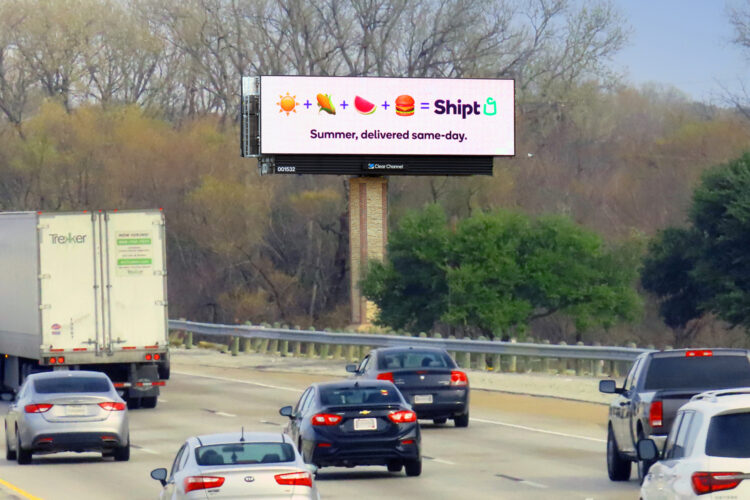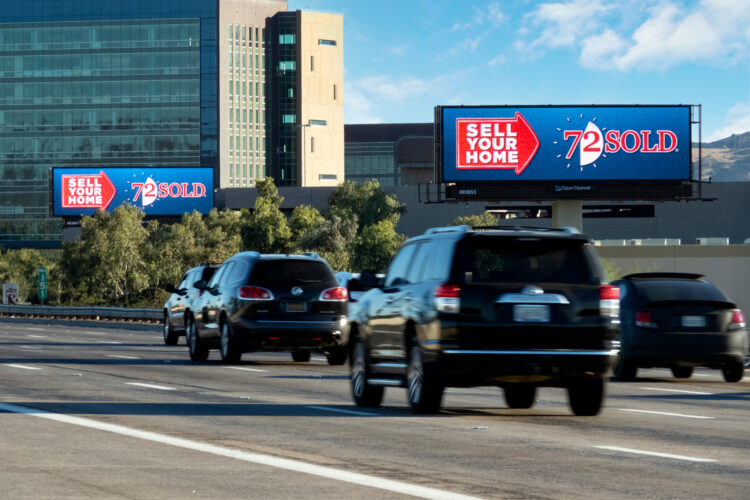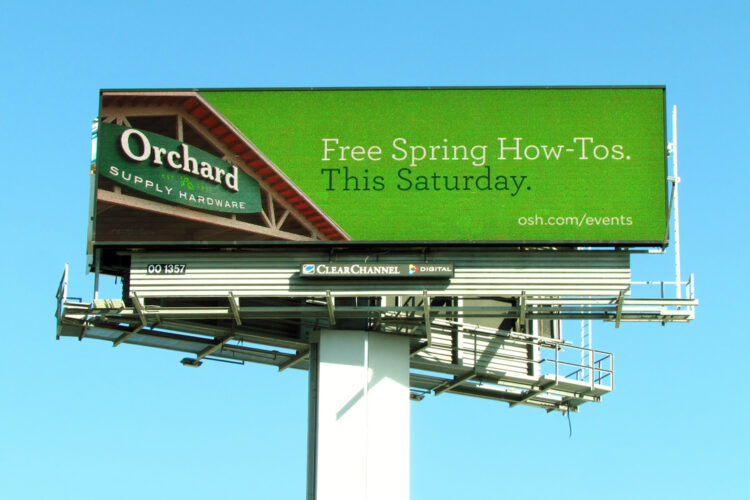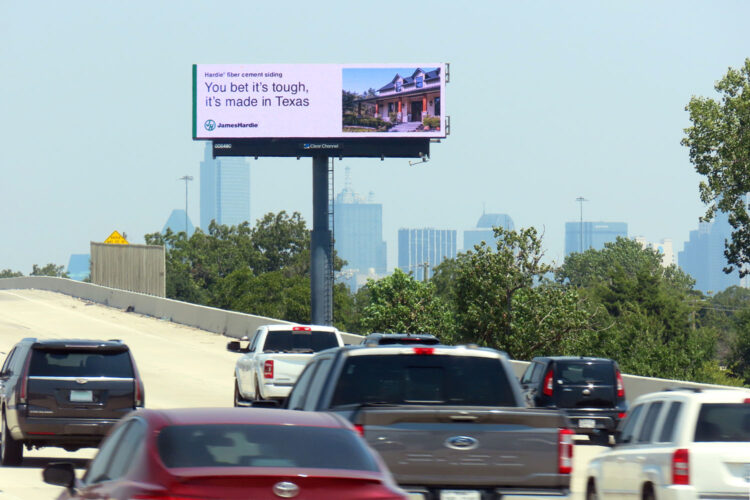In a Fractured Media World, OOH Is the Proven, Essential Medium in the Mix
Out-of-Home (OOH) advertising is increasingly vital in a fragmented media landscape where traditional channels face challenges like ad avoidance and brand safety. Recent studies demonstrate that OOH not only breaks through consumer attention barriers but also drives key brand metrics without many of the challenges common in digital ads.
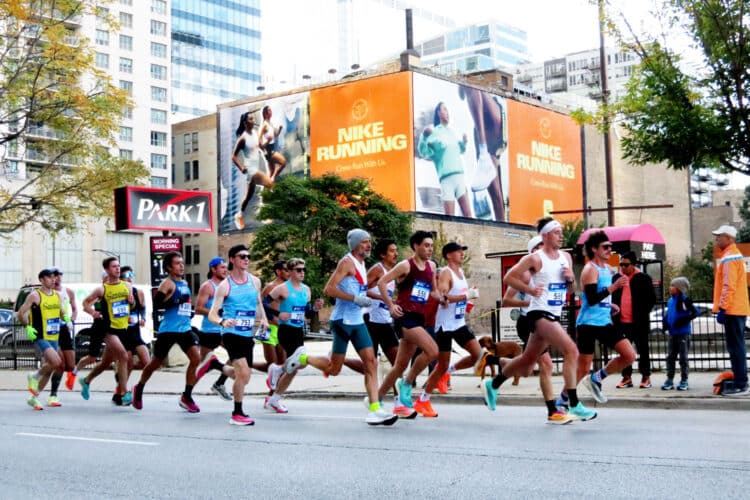
Marketers are living through a paradox. We have more data, dashboards and media channels to use, and yet it’s never been harder to reach a scaled audience with meaningful impact. Ad-free streaming, audience fragmentation, AI negatively impacting search performance, evolving privacy policies and regulations and ongoing and persistent challenges with digital ad fraud and brand safety continue to challenge marketers and agencies.
In this complex media ecosystem, recent studies point to OOH as not just a resilient media channel, but one that is more essential than ever before.
I recently joined Joe Nowak of Kantar on an OAAA-hosted webinar, “The Proven Impact of OOH in Today’s Media Mix,” where we unpacked a five-year longitudinal study comparing the performance of OOH to TV, CTV and digital media. The topline: OOH consistently breaks through, drives key brand health metrics, and, importantly, does so without many of the risks and challenges increasingly attached to hyper-targeted, intrusive digital ad formats.
OOH exists in the real world and engages with people on their daily journeys: on commutes, school runs, trips to the store and more. Importantly, OOH reaches consumers without hijacking a stream or halting a show: it gives them the opportunity to consume the message without interrupting their journey or objectives. According to data that Kantar shared regarding ad receptivity, this non-intrusive nature of OOH is one of the reasons so many consumers feel positively about OOH advertising and are receptive to ads delivered by this “legacy” media channel. Importantly, younger consumers actually have a preference for OOH, as Kantar’s data show it’s the only traditional medium that still ranks for Gen Z.
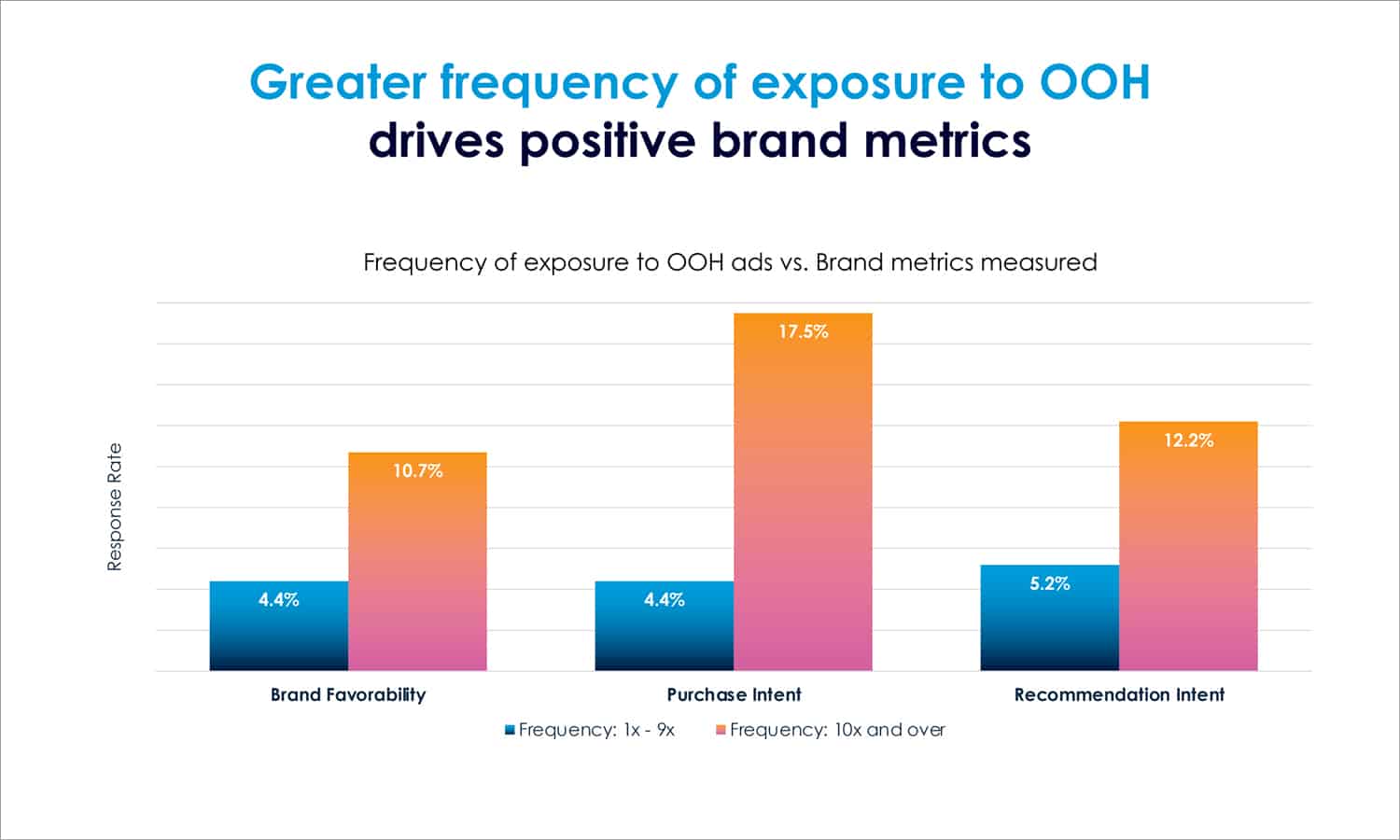
Reinforcing the importance of ad receptivity, Kantar’s report compares the performance of OOH to other media channels: OOH significantly outperforms digital media and CTV on key brand health metrics like ad awareness, brand favorability and purchase intent. And even when compared to linear TV, OOH still delivers better results and impact on ad awareness and purchase intent. Given how much money marketers continue to invest in linear TV, even with declining audiences and massive ad avoidance, there’s clearly a strong argument for OOH to play a larger and more strategic role in more marketers’ media strategies.
But what’s really interesting about the study is that this is not about “OOH vs. TV,” but rather, “OOH with TV.” It’s about understanding the incremental contribution that OOH can bring to contemporary marketers’ businesses, and challenging the preconceived assumptions about the role that OOH can play in driving measurable performance.
And as a guy who has dedicated a significant portion of his career to helping to modernize this oldest of old-school media types, that’s kind of exciting.
In addition to the findings shared by Kantar, the webinar touched on three additional insights that challenge conventional wisdom and can inform how media planners strategize and buy:
1) Frequency in OOH is a feature, not a bug
We’ve all had to endure one of biggest issues with the CTV experience: you’re served the same ad over and over again in the same program. That kind of excessive frequency has been proven to risk causing damage to consumers’ perceptions of both the streaming platform and the advertised brand. OOH is different. Clear Channel has proven that frequency in OOH is actually a driver of performance; the more people see the ad, the more likely they are to convert. We’ve proven this in one of the primary uses of OOH, to drive people to visit brick and mortar store locations. And now, through Clear Channel’s ongoing partnership with Kantar, driven by the integration of CCO’s proprietary RADAR data analytics platform’s exposure data into Kantar’s research panel, we’ve also shown that higher OOH exposure frequency also correlates with stronger performance on key brand metrics. Said differently, frequent exposure to OOH ads drives not just store visits, but brand favorability and awareness. This key insight should challenge the conventional wisdom that frequency capping is a requirement. Yes, for digital media, but for OOH, no cap is required.
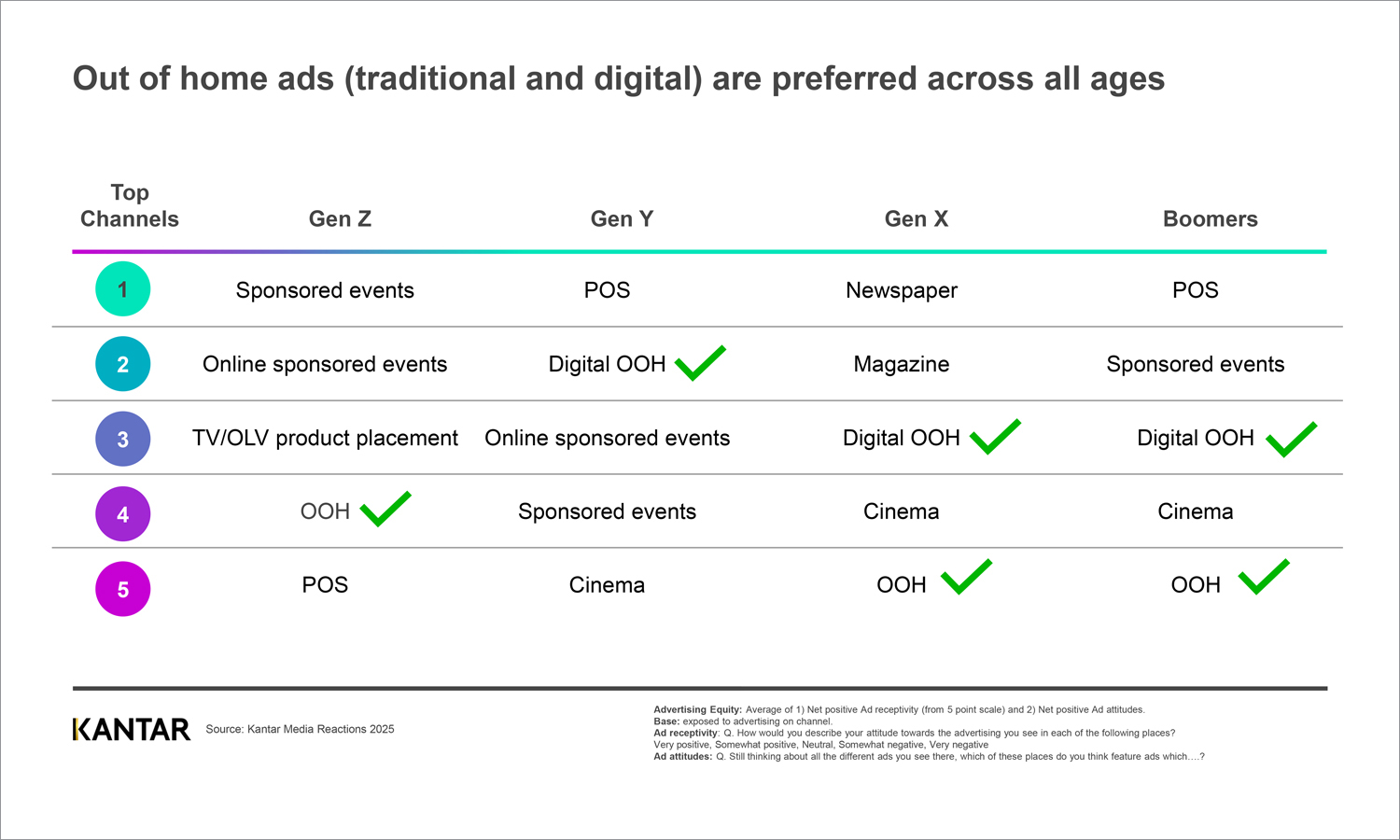
2) OOH feeds the funnel performance channels depend on
Performance marketing can be powerful, but its impact is finite; it “squeezes” outcomes from a fixed universe of potential customers, typically limited by the size of the social media audience the marketer is tapping into or the universe of people searching for a product or brand. When you focus solely on performance marketing at the bottom of the funnel and don’t effectively reinforce brand salience and meaning at the top, your bottom-funnel performance tends to degrade over time. OOH reinforces that audience potential by expanding the set of people who are aware of your brand or product and can be led into your conversion funnel. This is especially critical at a time when search ad performance is significantly disrupted by the impact of AI and the shift from search engines to answer engines. Through some initial work done via our RADAR data platform, Clear Channel’s early analysis shows that the introduction of OOH into a media plan tends to drive an increase in search activity. While specific results will vary by brand and SEO/SEM execution, the strategy lesson is universal: use OOH to create awareness and brand salience that results in more potential demand that performance marketing tactics can harvest.
3) This isn’t just a digital OOH thing
There is a tendency to assume that these innovative uses of data analytics are only applicable to digital OOH campaigns, or campaigns that are bought programmatically. The truth is frankly the exact opposite. The solutions that Clear Channel and our RADAR data platform have brought to market were intentionally created to focus not on the form of the display or the way the ads were bought, but rather on the audiences reached. It’s about moving the OOH sector from a focus on structures to a focus on audiences and outcomes. At CCO, our approach is channel-agnostic: printed vs. digital, direct vs. programmatic, roadside vs. airports. What matters is the ad exposure and the outcomes that follow. That mindset unlocks the opportunity for OOH to be planned and measured not in a silo but alongside TV, CTV, search and social as a peer, not an afterthought.
As I like to say, advertisers don’t really buy ads. They buy a means to deliver a message to a certain audience to try and get that audience to exhibit a certain behavior. And thanks to this landmark study by Kantar, it is clearer than ever before that OOH’s inclusion in the media mix will drive better campaign outcomes. OOH meets people along their daily journeys in the real world, earns attention without interrupting, scales frequency without fatigue and reliably moves the brand metrics that make contemporary media plans work harder.
Source: Kantar, 2019-2024; OAAA, 2025; Kantar Media Reactions 2025; CCO RADAR, Kantar, July 2025

Dan Levi
Executive Vice President & Chief Marketing Officer
Dan Levi leads CCO's marketing strategy to help brands connect with consumers through innovative advertising solutions. With deep expertise in digital marketing, he has driven revenue growth for B2B and B2C organizations and previously held leadership roles at Captivate, WWE and MTV. Dan serves on the boards of the National Summer Learning Association, OAAA and Geopath, and in 2025 received the prestigious L. Ray Vahue Marketing Award of Merit.
More by DanExplore More Posts
The Roadblock Strategy: Why the Best Advertising Can’t Be Skipped
In a world of skip buttons and endless scrolling, billboard advertising remains unavoidable. Digital Roadblocks take out-of-home’s innate advantages and amplify them, concentrating presence into synchronized moments that cover entire markets and drive exponential impact.
4 min
Out-of-Home Innovation Is Driving Results in Healthcare Advertising
OOH is rewriting the playbook for healthcare advertising, pairing billboards with data and mobile ads to drive patient visits, prescriptions, and real results.
6 min
OOH Spring Campaigns: Creative Strategies to Make Your Brand Blossom in 2026
Spring brings a renewed mindset for consumers, focused on fresh starts, special moments, and new purchases. Brands can capture this energy with billboard campaigns that inspire action during the season.
2 min
How to Choose the Right Billboard Locations: 6 Data-Backed Tips for Success
Location can make or break a billboard campaign. Clear Channel Outdoor (CCO) has tips and data-backed solutions to help your ad reach the right audience at the right time.

